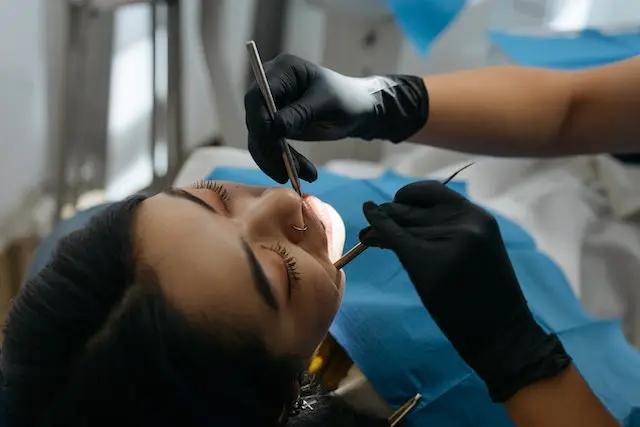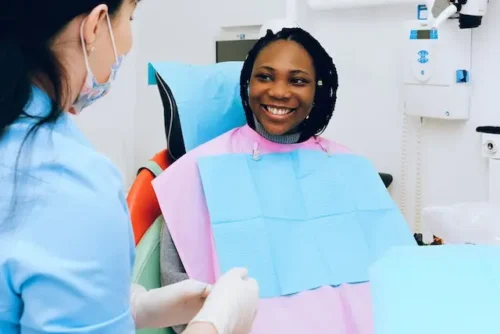
9 Reasons You Need To Visit An Orthodontist
What is the first thing you notice when you look in the mirror? For most people, it is their smile. A beautiful, healthy smile conveys confidence, happiness, and approachability. But beyond aesthetics, a functional smile is critical for clear speech, proper nutrition, and oral health by regular orthodontist visit.
To maintain the form and function of your smile, visiting an orthodontist for routine care is essential. Orthodontists are trained dental specialists who treat misalignments of the teeth and jaw. While “orthodontics” may evoke images of teens in braces, these experts offer a wide range of treatments for patients of all ages. An experienced orthodontist assesses your current oral health, identifies subtle problems early, and recommends appropriate therapies tailored to your needs.
Your smile deserves the best care, and an orthodontist ensures it gets just that. But, if you’re still not convinced, read on to learn the nine reasons you need to schedule an orthodontic visit. Let’s start.
1. Early Detection of Dental Issues
Getting ahead of emerging dental problems is critical, and routine orthodontic visits allow for early detection and intervention. As you consider the importance of early detection, it’s crucial to find the right professional. A search for the Best orthodontist appointment near me can direct you to top recommendations in your area, ensuring you receive proper care from the best professionals.
An orthodontist will monitor for issues like slight misalignments, abnormal bites, and crooked teeth. Catching these minor problems early prevents them from worsening over time and requiring extensive treatment.
2. Correcting Bite Problems
Several orthodontic issues arise when the upper and lower jaws do not align properly. This affects the bite relationship between the top and bottom teeth. Malocclusions like overbites, underbites, open bites, and crossbites can lead to uneven wearing of tooth surfaces, difficulties chewing and speaking clearly, and chronic jaw joint strain.
Orthodontists correct these bite problems by realigning the upper and lower arches using braces and clear aligners. This establishes uniform contact between the top and bottom teeth, resulting in balanced bite forces. The orthodontist will also monitor progress to ensure the stability of the corrected bite alignment.
3. Improvement of Oral Function
Orthodontic treatment also enhances other facets of oral function. Well-aligned arches allow for effective chewing, grinding, and swallowing of food for improved digestion. Corrected spacing and alignment of teeth enable clear pronunciation and speech. Patients report improved articulation after orthodontic treatment.
Additionally, proper jaw alignment optimizes airway space. Orthodontists can help prevent obstructed breathing by correcting overbites or retrognathia (receded chin).
4. Enhancement of Aesthetics and Self-Confidence
An attractive, healthy smile is invaluable for self-esteem and confidence. Beyond the psychological boost, a vibrant smile also makes memorable first impressions in social, academic, and professional settings. Orthodontists recognize this and offer treatments to enhance smile aesthetics.
Options like clear aligners and ceramic braces incrementally straighten crooked, gapped, or crowded teeth for improved symmetry and proportion. Closing gaps hides dark spaces between teeth. Whitening procedures can brighten smile radiance. The end result is a revitalized smile appearance and improved self-image. Looking good instills confidence to interact, express yourself, and make strong first impressions.
5. Facilitating Proper Oral Hygiene
Building on the prior section, well-aligned teeth kept in place by retainers are much easier to clean and maintain. With straightened teeth, there are fewer hard-to-reach nooks for plaque and bacteria to accumulate. Food particles can be removed efficiently by brushing and flossing. This level of cleaning is difficult with crooked, crowded teeth.
Patients are empowered to maintain good cleaning habits at home. An orthodontist can guide you on proper brushing and flossing methods based on your unique alignment. This prevents decay and gum disease, supporting lifelong oral health.
6. Avoiding Jaw Joint Problems
The temporomandibular joint (TMJ) connects the jaw to the skull. When the bite alignment is off, increased strain is placed on the TMJ during chewing and motion. This can lead to TMJ disorders (TMD), causing chronic pain, arthritis, headaches, and impaired function.
Orthodontists can help avoid TMD by correcting bite misalignments early. Proper occlusion prevents strain on the TMJ joint. For existing TMD, orthodontists may use bite splints or night guards to protect the TMJ. Routine orthodontic care helps prevent or treat TMD for optimal jaw joint health.
7. Childhood Orthodontic Assessment
According to the American Association of Orthodontists, every child should get an initial orthodontic assessment by age 7. Early evaluation allows orthodontists to spot subtle alignment and growth issues during this formative stage. Early detection means timely intervention when growth modification is still possible.
Annual orthodontic visits monitor ongoing dental development in children. Orthodontist visit track growth patterns and detect problems with emerging permanent teeth. Early correction enhances treatment effectiveness and reduces the need for major interventions later.
8. Treatment Options Beyond Braces
While once the standard, today’s orthodontists offer less conspicuous options beyond traditional metal braces. Clear ceramic braces blend in with natural teeth. Removable clear aligners are virtually invisible. Lingual braces attach behind teeth. Retainers hold teeth in corrected positions.
An experienced orthodontist will determine the ideal treatment plan and modalities based on a patient’s specific needs. Using 3D imaging and planning, they can provide precise care with shorter treatment times. Advanced technology expands options for personalized orthodontic treatments.
9. Consultations are Informative
Many orthodontists offer no-cost initial exams and consultations. Even if you are unsure about treatment, a consultation provides insight into your orthodontic health. The orthodontist will check for any misalignments and explain options to improve your smile. You can also get questions answered about various treatments.
Consultations are an excellent opportunity to learn about your unique orthodontic needs. The orthodontist visit can put together a customized treatment plan to enhance your smile’s aesthetics and function.
Read More: 5 Things to Consider When Choosing an Orthodontist
Conclusion
Making regular orthodontic check-ups part of your routine oral healthcare prevents extensive problems, enhances function and aesthetics, and sets you up for a lifetime of excellent oral health. Do not delay – consult an experienced local orthodontist for an assessment and start your journey toward a healthy, beautiful smile today.



